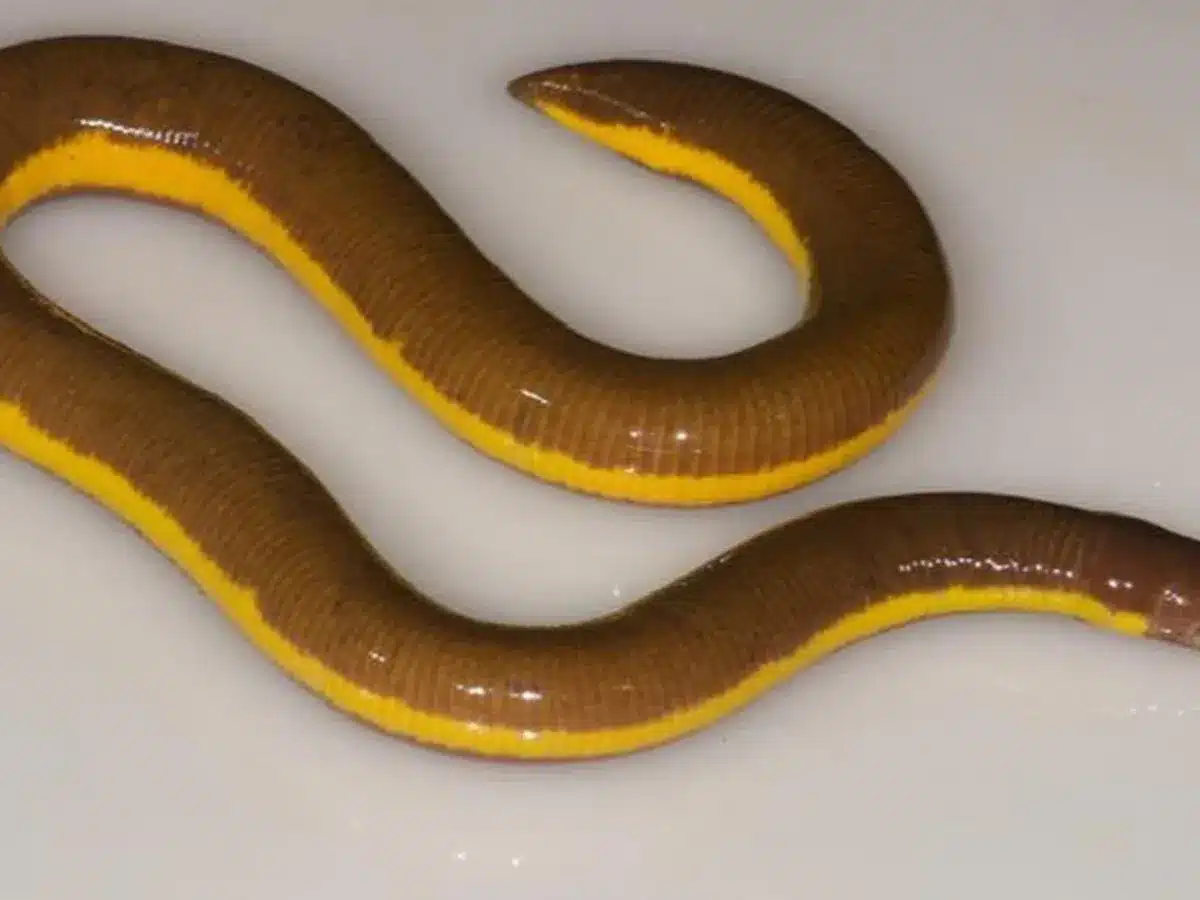About Caecilians
- The Caecilians are elongated, segmented, limbless amphibians.
- They are classified in the order Gymnophiona or Apoda (“without legs”).
- They belong to the same group of animals that includes frogs and salamanders.
- Lacking limbs, caecilians resemble earthworms or snakes in appearance.
- The name Caecilian means “blind“. Some caecilian species are eyeless, while others have small eyes hidden under their skin.
- There are about 200 known caecilian species.
- Habitat:
- Most caecilians inhabit moist tropical and subtropical regions of South and Central America, South and Southeast Asia, and Sub-Saharan Africa.
- Almost all caecilians are terrestrial, but they are elusive as they spend the majority of their lives underground.
- They burrow primarily in forests, but also in grassland, savanna, shrubland, and wetlands.
- Other Features:
- The smaller species measure less than three inches, but the largest one (Caecilia thompsoni from Colombia) grows to almost five feet long.
- A hard, thick skull with a pointy snouthelps them move effectively through dirt or mud.
- Their shiny skin is ringed with skin folds called annuli.
- They usually come in shades of gray, brown, black, orange, or yellow.
- Some have tiny, fishlike scales within the rings.
- They have short, sensory tentacles located between their eyes and nostrils that help them probe their environment and find prey.
Q1: What are amphibians?
Amphibians are cold-blooded vertebrates (vertebrates have backbones) that don’t have scales. They live part of their lives in water and part on land. The species in this group include frogs, toads, salamanders, and newts. All can breathe and absorb water through their very thin skin. Amphibians also have special skin glands that produce useful proteins. Some transport water, oxygen, and carbon dioxide either into or out of the animal. Others fight bacteria or fungal infections. And at least one—in each species—is used for defense.
Last updated on December, 2025
→ Check out the latest UPSC Syllabus 2026 here.
→ Join Vajiram & Ravi’s Interview Guidance Programme for expert help to crack your final UPSC stage.
→ UPSC Mains Result 2025 is now out.
→ UPSC Notification 2026 is scheduled to be released on January 14, 2026.
→ UPSC Calendar 2026 is released on 15th May, 2025.
→ The UPSC Vacancy 2025 were released 1129, out of which 979 were for UPSC CSE and remaining 150 are for UPSC IFoS.
→ UPSC Prelims 2026 will be conducted on 24th May, 2026 & UPSC Mains 2026 will be conducted on 21st August 2026.
→ The UPSC Selection Process is of 3 stages-Prelims, Mains and Interview.
→ UPSC Result 2024 is released with latest UPSC Marksheet 2024. Check Now!
→ UPSC Prelims Result 2025 is out now for the CSE held on 25 May 2025.
→ UPSC Toppers List 2024 is released now. Shakti Dubey is UPSC AIR 1 2024 Topper.
→ UPSC Prelims Question Paper 2025 and Unofficial Prelims Answer Key 2025 are available now.
→ UPSC Mains Question Paper 2025 is out for Essay, GS 1, 2, 3 & GS 4.
→ UPSC Mains Indian Language Question Paper 2025 is now out.
→ UPSC Mains Optional Question Paper 2025 is now out.
→ Also check Best IAS Coaching in Delhi

















